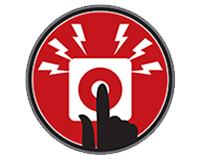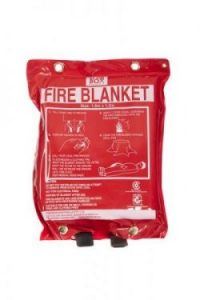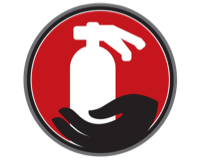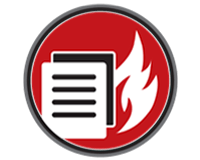
Choosing the Right Fire Extinguisher for your Business
Ready to talk about the hot stuff? Think you can handle a fire when it happens? Your response time matters. Without thinking too much about it, you know the quickest solution is to grab the nearest fire extinguisher.
A fire extinguisher can help you put out small fires before they get out of hand. Fire extinguishers are your first lifeline when it comes to fire fighting. Having one ready can buy you enough time to escape a burning property. On average, a fire extinguisher’s stream can be directed 2-3 meters away from the fire. Once the nozzle is pulled, you have 15 seconds to tame that fire down to a fizzle. Of course, not all fires can be easily put out. It’s still best to call emergency services for any type of fire.
In New Zealand, as stated in the 1991 NZ Building Code, every business is required to have a portable fire extinguisher or hand-operated firefighting equipment installed. The installation of these fire precautions often happens during the period of the Compliance Schedule and the Building Warrant of Fitness.
Looking beyond the business areas of Auckland, Whangarei and Northland, every home should have a fire extinguisher installed, as fires don’t only target the business community.
The ABCs of Fire Types
Fire extinguishers come in different sizes and priced accordingly to the scope of your needs. Fire extinguishers are sized allowing them to fit pretty much any budget allowing you to have one in your home and keep your loved ones safe – These are perfect for common fire hazard areas in your home, such as your kitchen or garage where flammables are often stored.
The truth is, some fires burn brighter, hotter and longer than others. With this in mind, fire safety experts have come up with fire classifications that are aligned with the use of certain fire extinguishers.
In order to understand more about fire extinguisher safety, you need an overview of how fires are classified.
If you’re unsure what portable extinguisher you have, refer to the photoluminescent fire extinguisher ID sign. You may read about Class A, Class B and C fires on the fire extinguishers label and still have no definite idea what it all means. For your guidance, here’s a quick overview of that fire classification:
Types of Fire Extinguishers
Getting the right kind of fire extinguisher for your business or home will save you a lot of trouble. Fire extinguishers work by putting out the element which caused the fire – be it heat, fuel, oxygen, and chemical reaction – so it is important to know the types of fire extinguishers and when to use them. Using the wrong type of extinguisher is a critical mistake and can cause a fire to spread.
We have listed the different types of fire extinguishers below so you can decide which one suits your needs best:
Water Extinguishers
Water extinguishers have a specialised nozzle that bursts out a strong mist curtain; this effectively reduces the oxygen levels a fire can obtain. Most commonly used extinguishers that puts out fires involving wood, paper, fabric, and other solid materials.
Water fire extinguishers can’t easily be used on electrical fires, and really shouldn’t be considered. We all know water and electrics don’t mix – after all they can get you electrocuted! Not meant to tackle Class B fires and resilient fires brought about by combustible liquids such as oil or petroleum.
Foam Extinguishers
Foam fire extinguishers simply smother the fire by releasing a cool blanket of soft suds that choke the fire out. The foam further seeps into the burning material, effectively stopping reignition or any attempt at rekindling. It has an amazing reaction on flammable liquid-based fires by creating a coolant barrier between the fuel and the flame. It cuts off the interaction of these two elements. They can be used for Class A and B Fires. The foam residue is also easier to clean away after use and less damaging when used on electrical equipment.
Carbon Dioxide Extinguishers
CO2 fire extinguishers contain carbon dioxide liquid. When discharge during an emergency, the force of the nozzle releases it as a gas. They have a distinctive black label which says CO2. It has no pressure gauge on the top and the nozzle has an elegant shape double-insulated long black horn.
CO2 fire extinguishers are mainly used for electrical fires. Thus easily found in business areas and premises with lots of computers, circuitry, generators or machinery. Often paired up with a foam extinguisher, a combination of these two can effectively put an end to a workplace fire.
However, there are two things to keep in mind with CO2 fire extinguishers. (1) Never use them in small confined areas or areas without ventilation. The Co2 will eat up the oxygen in the space and may cause asphyxiation. Also avoid touching the nozzle while it discharges the C02, as it can freeze-burn the skin. Ouch!
(2) Never use a CO2 fire extinguisher to tackle a simple fire which is the Class F, a burning frying pan kind of fire which has cooking oil and grease, that would surely make the situation a lot worse. Highly pressurized when released in a very fast blast from the nozzle, the impact of this is that it may spread and reignite the fire in a different direction.
Ironically, when it comes to a general type of fire caused by solid combustibles, a CO2 fire extinguisher maybe quite ineffective, but when it comes to difficult and complex fires involving machinery and electricity, they are the best ones to have around.
Dry Chemical Extinguishers
Dry chemical extinguisher such as the ABE dry chemical fire extinguisher and BE dry chemical fire extinguisher works by discharging a highly-pressurised burst of fine chemical powder. Once it makes contact with the flames, the powder melts and coats the burning material, creating a barrier between the elements of fuel and oxygen. The base agent for this dry chemical powder is often mono-ammonium phosphate, along with an additional powder coating of sodium bicarbonate and potassium bicarbonate which are helpful in extinguishing fires. (What you need to know, is that these chemicals tackle fires!)
Ordinary dry chemical extinguishers put out fires involving liquids and gases. Considered the most versatile, multi-purpose dry chemical extinguishers can also put out combustible solids. One should be particular though, because using an ordinary dry chemical extinguisher (instead of the multi-purpose one) can cause a risk of the fire to re-ignite when used on wood, paper, fabric. Not suitable for Class F fires.
Wet Chemical Extinguishers
You think an F class type of fire is so simple to put out since it’s usually a kitchen pan fire, but in fact, it takes a specialised fire extinguisher to do so. This type of extinguisher particularly puts out a fire involving cooking oil, olive oil and any fire caused by fat. It works primarily as a coolant, lowers the flame temperature and stops the oil from fizzling. It removes the heat component of the fire with its soap-like solution and avoids re-ignition. Restaurants, kitchens, and hotels mostly use wet chemical extinguishers. This has a big yellow label.
Dry Powder Extinguishers
Dry powder extinguishers put out a fire involving combustible metals only. They are ineffective in extinguishing a fire involving anything other than metal. There are versatile dry powder extinguishers which can put out fires from combustible solids, flammable liquids, and also gases, but it is important to take note that this is usually for metal materials. It maybe dangerous to inhale the powder thus not recommended using in enclosed spaces.
Fires Move Fast
Everything can go under in just 3 minutes with a break-out fire, but all of this is preventable when the proper fire safety protocols are in place. Plus getting a grip on the right kind of fire extinguisher is crucial because using the wrong one during a fire scenario will not be effective – or worse – may result in electrocution and even cause a fire to re-ignite or spread further. It also helps to let your employees and tenants know of your fire escape plan and more importantly, how to use a fire extinguisher.
Most people feel intimidated or clueless on how to pull a fire extinguisher nozzle and direct it at a fire. We can help you lead by example through Fireco’s equipment training. We can get employees up to speed when it comes to fire safety, so they’ll know instinctively know how to react and respond when a fire breaks out.
With Fireco, we can ensure your firefighting equipment is up-to-date, your extinguishers pressure-tested and that all your emergency specified systems are in working order. Because at Fireco, we’re all about saving lives and making your workplace a lot safer.
Give us a call at 0800 101 232 or leave us a message for a no-obligation free quote.






















